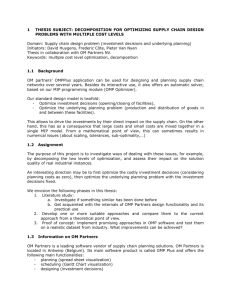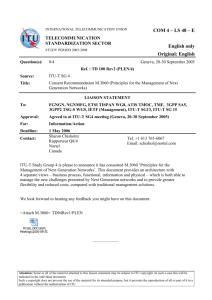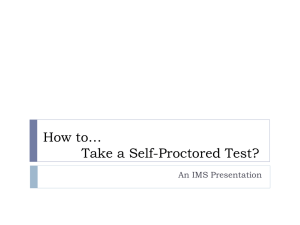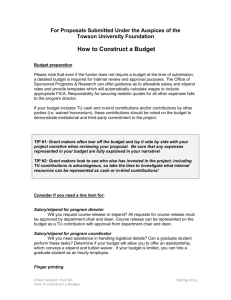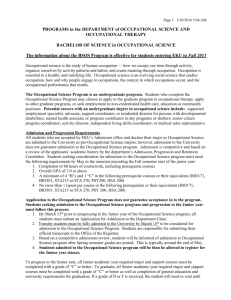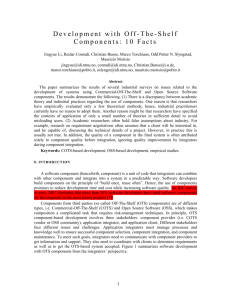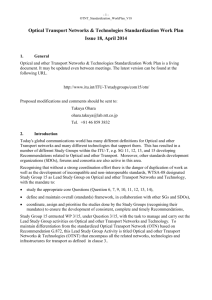LS/r on CCAMP Liaison to ITU-T SG15 Q6 and Q12 on flexible grid
advertisement
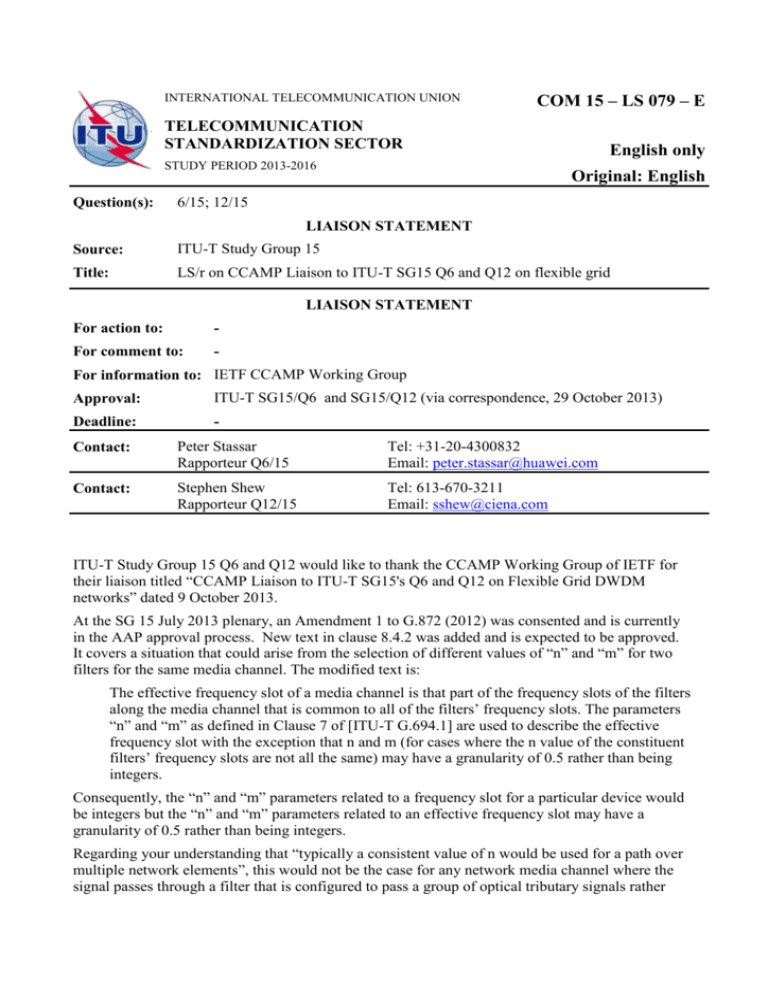
INTERNATIONAL TELECOMMUNICATION UNION COM 15 – LS 079 – E TELECOMMUNICATION STANDARDIZATION SECTOR STUDY PERIOD 2013-2016 Question(s): English only Original: English 6/15; 12/15 LIAISON STATEMENT Source: ITU-T Study Group 15 Title: LS/r on CCAMP Liaison to ITU-T SG15 Q6 and Q12 on flexible grid LIAISON STATEMENT For action to: - For comment to: - For information to: IETF CCAMP Working Group Approval: ITU-T SG15/Q6 and SG15/Q12 (via correspondence, 29 October 2013) Deadline: - Contact: Peter Stassar Rapporteur Q6/15 Tel: +31-20-4300832 Email: peter.stassar@huawei.com Contact: Stephen Shew Rapporteur Q12/15 Tel: 613-670-3211 Email: sshew@ciena.com ITU-T Study Group 15 Q6 and Q12 would like to thank the CCAMP Working Group of IETF for their liaison titled “CCAMP Liaison to ITU-T SG15's Q6 and Q12 on Flexible Grid DWDM networks” dated 9 October 2013. At the SG 15 July 2013 plenary, an Amendment 1 to G.872 (2012) was consented and is currently in the AAP approval process. New text in clause 8.4.2 was added and is expected to be approved. It covers a situation that could arise from the selection of different values of “n” and “m” for two filters for the same media channel. The modified text is: The effective frequency slot of a media channel is that part of the frequency slots of the filters along the media channel that is common to all of the filters’ frequency slots. The parameters “n” and “m” as defined in Clause 7 of [ITU-T G.694.1] are used to describe the effective frequency slot with the exception that n and m (for cases where the n value of the constituent filters’ frequency slots are not all the same) may have a granularity of 0.5 rather than being integers. Consequently, the “n” and “m” parameters related to a frequency slot for a particular device would be integers but the “n” and “m” parameters related to an effective frequency slot may have a granularity of 0.5 rather than being integers. Regarding your understanding that “typically a consistent value of n would be used for a path over multiple network elements”, this would not be the case for any network media channel where the signal passes through a filter that is configured to pass a group of optical tributary signals rather -2COM 15 – LS 079 – E than individual optical tributary signals. An example of this would be where a group of “express channels” are routed together through a particular network element. In this case the “n” parameter would represent the frequency at the centre of the group rather than the central frequency of an individual optical tributary signal. To illustrate this, we can define an example with just two optical tributary signals (OTS’s) and for convenience choose two of the channels shown in Figure I.2 of G.694.1 Choose OTS_1 as a 50 GHz spacing signal with a nominal central frequency of 193.1 THz Choose OTS_2 as a 50GHz spacing signal with a nominal central frequency of 193.15 THz A mux filter for OTS_1 has a frequency slot with n=0, m=4 A mux filter for OTS_2 has a frequency slot with n=8, m=4 If there is a group filter in the system that is configured to pass these two OTS’s and no others then the frequency slot allocated to this filter is n=4, m=8. So, if the network media channel traverses a mux followed by the group filter followed by a demux, then the sequence of frequency slots associated with the network elements that OTS_1 traverses will be: n=0, m=4 for the mux n=4, m=8 for the group filter n=0, m=4 for the demux Consequently, for a single network media channel within this group, the “n” value of the frequency slot for successive network elements can change from end to end. At this time, no guidance on signaling procedures detailed in draft-ietf-ccamp-flexi-grid-fwk-00.txt are being provided as Q12 and Q14 have not made any decisions on requirements for ASON signaling for flexible grid DWDM networks. Q6/15 and Q12/15 hope that this response has addressed the questions raised by CCAMP in your liaison and we would be pleased to address any further issues that are identified as you continue to progress with your work. _______________
